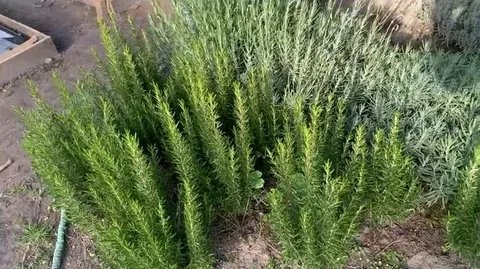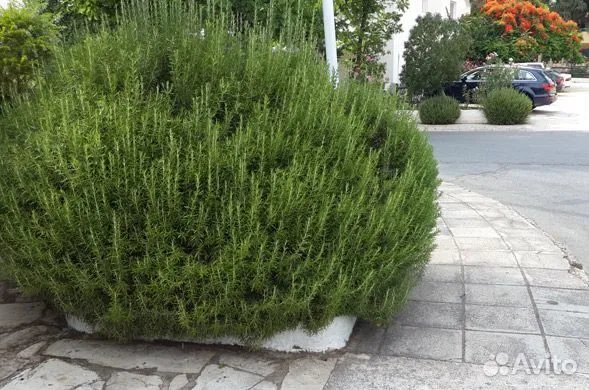When it comes to creating a beautiful and functional garden, many people focus on flowers, trees, and shrubs that add color or shade. But one plant often overlooked by gardeners—despite its incredible versatility—is **rosemary**. More specifically, rosemary hedges are an underappreciated garden feature that can bring tremendous benefits to your outdoor space. If you don’t already have rosemary growing in your garden, here’s why you should consider planting rosemary hedges as a smart and valuable addition.

### 1. **Aromatic Beauty That Lasts Year-Round**
Rosemary is an evergreen shrub, meaning it keeps its lush green foliage all year round. This makes it an excellent choice for hedges, as it provides constant visual interest no matter the season. What’s more, rosemary is famous for its fragrant leaves. When the wind blows or when you brush against the plant, it releases a refreshing, pine-like aroma that fills the garden with a calming, herbal scent.
This natural fragrance doesn’t just please your senses—it can also help mask unwanted odors and create a relaxing atmosphere, making your garden a true haven for yourself and your guests.
### 2. **A Natural Pest Repellent**

One of rosemary’s greatest unsung benefits is its ability to repel many common garden pests. The plant’s aromatic oils deter mosquitoes, flies, and other insects that can be a nuisance. By planting rosemary hedges around your garden or patio, you create a natural barrier that helps protect your other plants and your outdoor living areas from bothersome bugs—without the need for chemical pesticides.
### 3. **Drought Tolerance and Low Maintenance**
Rosemary is exceptionally hardy and drought-tolerant once established. It thrives in sunny spots with well-drained soil and requires minimal watering. This makes it an ideal choice for gardeners who want attractive, evergreen hedges without the burden of intensive upkeep.

Unlike many other hedge plants, rosemary doesn’t need frequent pruning or fertilizing. With occasional trimming to maintain its shape, it will flourish with very little effort on your part.
### 4. **Versatility in Garden Design**
Rosemary hedges can be shaped and sized according to your garden’s needs. Whether you want a low border hedge to define a flower bed or a taller privacy screen along your property line, rosemary adapts beautifully.
Its dense, needle-like foliage creates a thick barrier, perfect for blocking wind, noise, and prying eyes. Plus, the plant produces delicate blue, purple, or white flowers in spring and summer, adding subtle bursts of color that attract pollinators like bees and butterflies—boosting the health of your entire garden ecosystem.
### 5. **Culinary and Medicinal Uses at Your Fingertips**
Having rosemary growing as a hedge means you always have fresh herbs just steps away from your kitchen. Rosemary leaves are widely used in cooking to enhance the flavor of meats, vegetables, soups, and breads.
Beyond the kitchen, rosemary has a long history in traditional medicine. It is believed to improve memory, boost circulation, and relieve muscle pain. Growing rosemary hedges in your garden gives you convenient access to this versatile herb for both culinary and therapeutic uses.
### 6. **Environmentally Friendly Choice**
Choosing rosemary hedges is a sustainable gardening practice. Since rosemary requires little water and fertilizer, it conserves resources compared to more demanding plants. Additionally, its pest-repellent qualities reduce the need for chemical insecticides, promoting a healthier environment for beneficial insects, birds, and wildlife.
### 7. **Enhancing Property Value and Curb Appeal**
A well-maintained rosemary hedge can dramatically boost your home’s curb appeal. Its neat, evergreen form combined with a pleasant aroma creates a welcoming entrance or boundary around your property.
Potential buyers often appreciate gardens with attractive, low-maintenance landscaping features like rosemary hedges. Investing in this herbaceous hedge can therefore enhance your property’s value and desirability.
### How to Grow and Care for Rosemary Hedges
– **Planting:** Choose a sunny location with well-drained soil. Space young rosemary plants about 18 to 24 inches apart for a dense hedge.
– **Watering:** Water regularly during the first year to help roots establish, then reduce watering as rosemary prefers drier conditions.
– **Pruning:** Trim lightly after flowering to encourage bushy growth and maintain shape.
– **Feeding:** Apply a balanced fertilizer in early spring if desired, but rosemary generally grows well in nutrient-poor soils.
– **Pests/Diseases:** Rosemary is fairly resistant but watch for powdery mildew or aphids and treat naturally if needed.
### Final Thoughts
Rosemary hedges are much more than just a pretty addition to your garden. They combine beauty, fragrance, functionality, and sustainability in one hardy plant. Whether you want a natural insect repellent, fresh herbs for cooking, or a visually appealing hedge that lasts all year, rosemary delivers on all fronts.
If you haven’t yet discovered the charm and benefits of rosemary hedges, now is the perfect time to plant this remarkable herb in your garden. With minimal care and maximum impact, rosemary will become your garden’s most beloved and useful feature.
